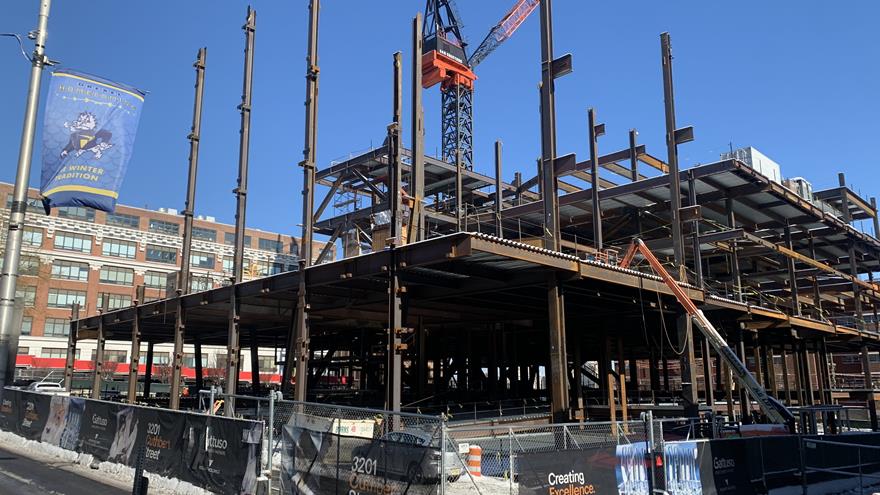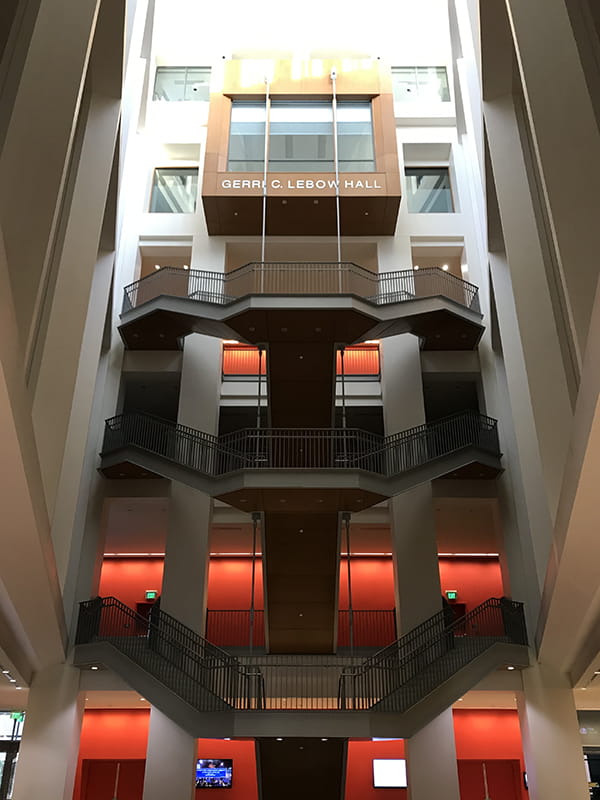Current Projects

Energy Management

Building Automation Systems
Drexel became one of the first universities to implement direct digital controls in renovations and new building construction to control lights, fans, pumps, air conditioners, boilers, heating valves, exhaust fans, heat recovery systems and some lab equipment. Eighty-five percent of Drexel's square footage uses Building Automation Systems to control mechanical equipment and lighting systems based on occupancy schedules and temperature control.

Efficient Lighting
In addition to efficient lighting fixtures and campus-wide use of LED lightbulbs, computer control systems turn lighting off when not in use. Room lighting occupancy sensors are installed in new construction and in renovation projects to conserve energy. Drexel also implements "dimming ballasts" and "daylight harvesting" lights, which automatically dim or turn off in areas where natural light is adequate. Many exterior lamps throughout campus use inductive bulbs that use less energy and have longer usage expectancy than conventional lamps.
Many Drexel buildings also contain innovative architectural features to promote lighting efficiency. For example, the Drexel Recreation Center uses an integrated glass and metal panel façade together with light scopes on the roof to allow significant day lighting into the space. This provides enough light to eliminate the use of electric lights during the day in 87 percent of interior occupied space. Gerri C. LeBow Hall features a five-story atrium to integrate natural light into the building.
Heating and Cooling
The University has many types of heating and cooling systems across campus. The components within these systems meet or exceed building code requirements because they reduce the utility usage required to provide internal conditions suitable for occupant comfort.
- Air Systems: Depending on the need (e.g. research lab, classroom, office space, etc.), these systems are comprised of either a combination of inside and outside air (a variable system) or 100 percent outside air solely for ventilation purposes (a dedicated system). Air handling units include economizers, bypass dampers, heat and energy recovery wheels, and heat pipe or fixed-plate heat exchangers.
- Heating systems: Comprised of steam and natural gas. Depending on the utility, various types of heat exchangers are used for conversion to water. Both constant and variable air pumping systems are installed on campus.
- Cooling systems: Comprised of direct expansion, water to water, and air-cooled equipment. Both constant and variable air pumping systems are installed on campus. Chilled water systems that use air-cooled equipment are protected from freezing with a more environmentally friendly form of glycol (propylene). The University still has two interconnected chiller plants that use an alternate form of glycol (ethylene) due to being connected to an ice plant system. Chilled beam systems are also installed in several buildings across campus.
The University uses an air-monitoring system in laboratory renovation projects to reduce airflows during occupied schedules. All fume hoods have occupant sensors, which automatically close fume hood sashes to reduce airflows.